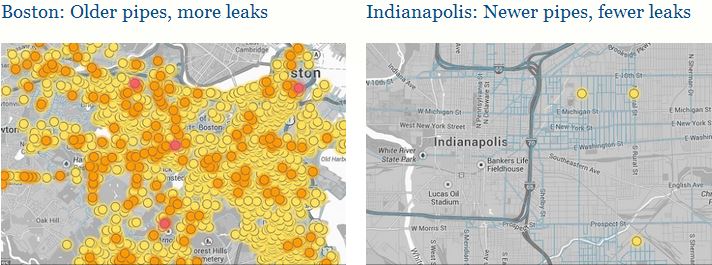Mapping Methane: Plugging Local Natural Gas Leaks Can Yield Global Climate Benefits

Natural gas provides power to millions and heats homes and buildings in cities across America. But when natural gas—mostly methane—leaks into the atmosphere, the climate impacts can be huge. While methane is a relatively short-lived climate pollutant, remaining in the atmosphere for roughly 12 years, on average, as compared to carbon dioxide, which can last for hundreds, it packs a much bigger punch on a ton-by-ton basis; just one ton of methane is equivalent, in terms of global warming potential, to 120 tons of carbon dioxide when first emitted.
In partnership with Google and the Robertson Foundation, Bloomberg Philanthropies grantee Environmental Defense Fund is working to build a faster, cheaper way to find and assess gas leaks under our streets and sidewalks. As part of a pilot mapping program, EDF released a set of interactive maps that identify methane leaks.
By collecting and displaying data in a user-friendly format, the project allows city officials and utilities to better understand where and how to fix leaking pipes, which are especially problematic in cities with older infrastructure. This new project uses cutting edge data collection and visualization tools to help raise public awareness about the global climate impacts associated with local natural gas leaks, and will provide regulators and policymakers with a powerful tool to improve policies to reduce these leaks.
Click here to see the interactive maps in action.